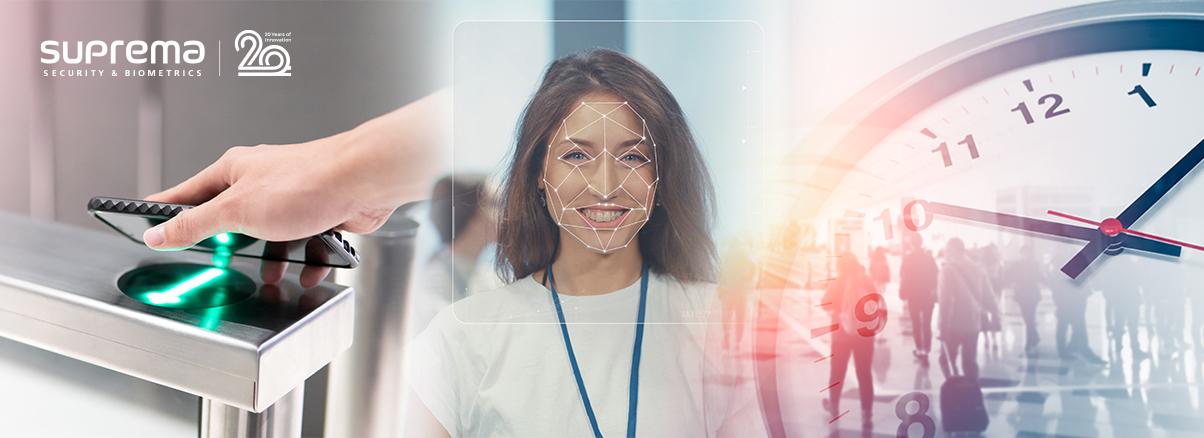- PRODUCTS
- Security Platform
- BioStar X | On-Prem SecurityNEW
- BioStar Air | Cloud Security
- BioStar 2
- Access Control
- Access Control Unit
- Biometric Readers
- RFID Readers
- Mobile Credential
- Peripherals
- Wireless Door Locks
- SOLUTIONS
- SUPPORT
- ABOUT
- device_hubHUB
- Blogs & Articles

No event has disrupted the lives of every human on earth – and every organization – as much as the COVID-19 global pandemic. It has also become clear that when we are on the other side of this crisis, the world will have been forever changed.
Both for businesses which have closed or gone remote during the pandemic, and for those which have remained open throughout, employers are changing their priorities to recognize the vital importance of supporting health and safety among their populations. As the economy prepares for the post-COVID era when businesses, schools and offices will be open again, management and human resources are adopting new stringent personal and workplace hygiene rules and processes for personnel.
To further address these concerns, organizations have placed a priority on searching for technology solutions to help curb the spread of viruses and microbes. From doors to sinks to elevators, these new technologies will be centered primarily on delivering a touchless experience. These are not just temporary changes. Now that we have all experienced the massive disruption that a pandemic can cause, business owners and other leaders will be implementing permanent changes in an effort to avoid a recurrence and avert any new health threats to the population.
Spotlight on Human Capital Management Needs
Among the new products and processes that are being researched now are those in the time and attendance market. These solutions are often combined with access control products, with an employee’s entrance and exit providing data on the start and end times of their workday. These products traditionally been card-based – a paradigm that requires contact. It is the responsibility of human capital management and security professionals to discover a new way to collect this data while minimizing health risks.
In evaluating potential contactless solutions for time and attendance, the technology that has been most widely accepted today falls into two categories: biometrics and proximity devices of all types.
Why Facial Recognition is Becoming More Attractive
While it is true that facial recognition continues to meet steep challenges in acceptance and adoption, it still has emerged as the leader among biometric solutions and will stand out even more in the future. There are several reasons for this. The other biometric technologies currently available in the market include iris recognition, palm vein scan and fingerprint readers. Iris recognition is often misunderstood to be a retina scanner, a misunderstood and sometimes-feared technology, and this has limited its growth. Like palm vein scanners, iris recognition is also too costly for many organizations. Fingerprint readers continue to be a successful technology; however, they are not a contactless solution which may affect growth of this technology in a future touchless world. These limitations leave facial recognition in a very strong position; one which is further cemented by the ever-increasing high accuracy of this technology.
In fact, the level of accuracy for facial recognition has improved enormously in the last 10 years, according to an evaluation performed by the National Institute of Standards and Technology’s (NIST). The failure rate for searches, meaning that the software failed to find the matching face residing within a database, has dropped from 5% in the year 2010 to just .2% in 2018 – a reduction of 96%.
When facial recognition software scans a face to look for a match, it is processing a number of different geometric vectors. While all software is different, most read such factors as the distance between eyes and the distance from chin to forehead. Depending on the sophistication of the software, it may be reading 50, 75 or more different factors. Typically, each analysis is performed individually, and – important in alleviating any concerns about personal information being collected – the only data stored on databases is the physical information contained in the photos themselves, along with the identities of the individuals in the photos.
The Ascendency of Proximity Solutions
While proximity technology has held a steady place in the identity authentication market, it is certain to gain traction in a newly contactless world. This category encompasses proxy cards and devices, and mobile technology in the form of apps added to users’ smartphones. Non-contact cards can be expected to hold their position, while mobile solutions are likely to gain traction as they offer the benefit of not needing additional administrative support. Mobile card solutions offer other advantages as well; it is far more likely that an individual would forget or misplace a card or device than their phone, which is typically within reach of most people most of the time. Mobile apps can be automatically and frequently updated, ensuring all employees are using the most recent version. While the primary limiting factor here would be the cost, there are also solutions available that can mitigate this such as the devices that attaches to RF card readers and translates the Bluetooth signals of mobile access cards to RF signals.
Time and Attendance in a New World
There is no way to know exactly when the world will return to normal once the pandemic has been fully brought under control. However, we can be certain that when it does, the world will not look the same as it did at the beginning of 2020.
By the time workers, visitors and others begin to return to the facilities where their organizations are based, there will have been a significant evolution in the way time and attendance data is collected. Leading this evolution will be a new wave of contactless access products to enable authentication of identities at entry and exit. Chief among these solutions will be those featuring facial recognition and proximity technologies, with facial recognition likely to assume a dominant role for its accuracy and convenience.
Attributed to: Stephen G. Sardi, Vice President of Workforce Management, Suprema America LLC.
Published on: Security Magazine
https://www.securitymagazine.com/articles/93612-how-the-global-pandemic-is-changing-time-and-attendance-solutions











